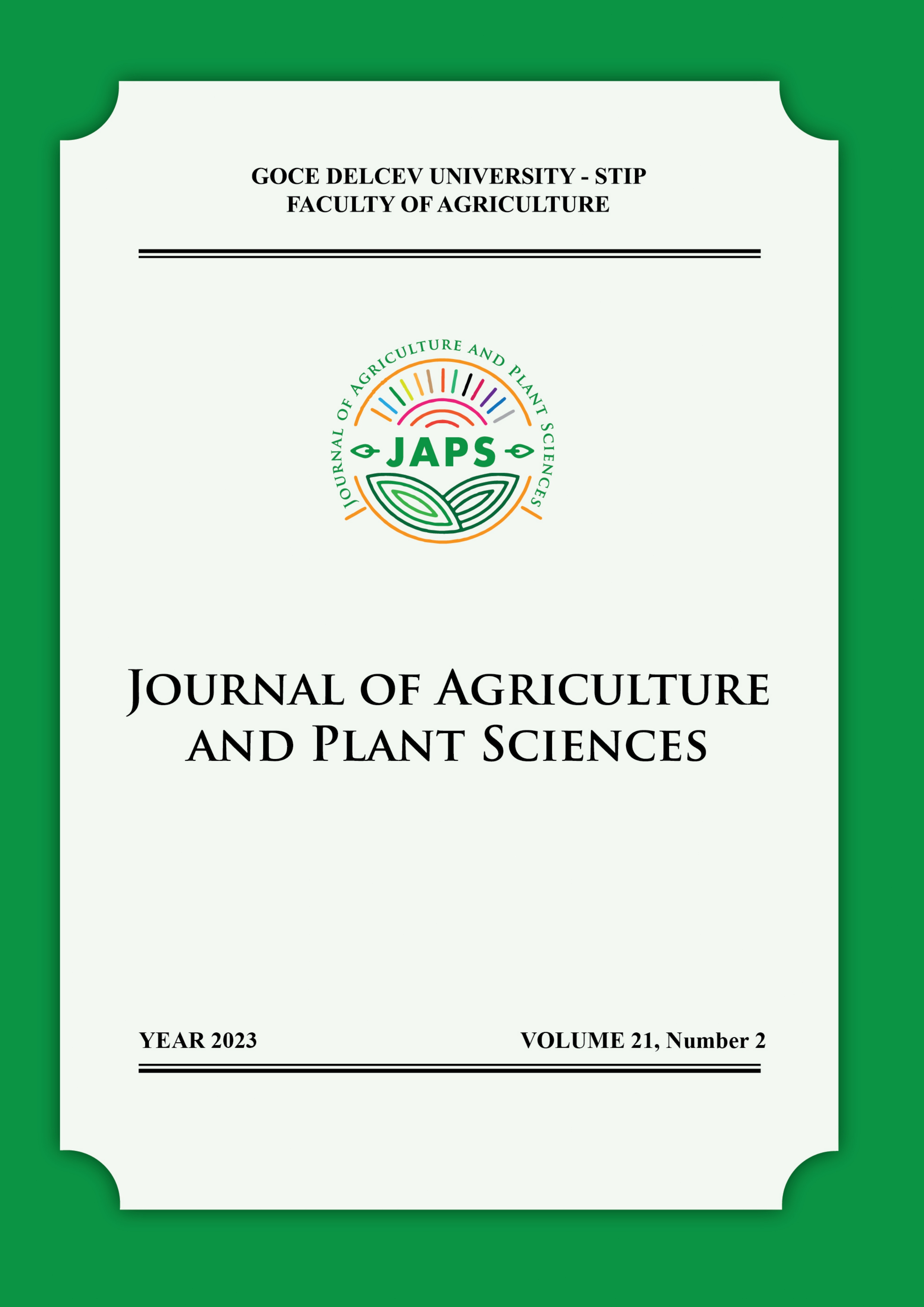CHEMICAL COMPOSITION OF SOME AUTOCHTHONOUS FRUIT SPECIES FROM MACEDONIA
DOI:
https://doi.org/10.46763/JAPS23212063sAbstract
The scope of this paper is determination of the content of soluble dry matters, total sugar, total acids, invert sugar and citric, malic, tartaric and lactic acid in some autochthonous fruit species: pomegranate (Zumnarija, Bejnarija, Valandovska kisela, Valandovska kiselo-slatka, Hidjas, Kisela, Lifanka, Ropkavec), apple (Ubavo cvetka, Shareno blago, Prespanka, Tetovka, Karapasha, Kozharka, Bela Tetovka) and cherry (Ohridska brza, Ohridska rana, Ohridska crna, Dolga shishka, Dalbazlija, Ohridska bela). Comparative studies were performed in relation to the standard varieties (Karamustafa-pomegranate, Idared-apple and Bigaro burlat-cherry).
Pomegranate fruits have the highest content of soluble dry matters (15.6%), total sugars (149.24 g/L) and total acids (20.11 g/L). The highest content of invert sugar was observed in pomegranate (113.94 g/L which means 76.3% of total sugar). In apple and cherry fruits, malic acid dominates (above 5 g/L), while in pomegranate fruits, citric and malic acids are almost equally represented. Tartaric acid is present only in apple fruits (0.383 g/L). Lactic acid was not found in all fruit species.
A strong positive correlation was found between soluble dry matter and total sugar (R2 is about 60%). A moderate positive correlation exists between the contents of total and invert sugar (R2 is about 20%), between total acids and invert sugar (R2 is about 22%) and between the content of malic and citric acid (R2 is about 30%). A high negative correlation was found between the content of total acid and malic acid (R2 is about 37%) and between malic acid and invert sugar (R2 shows 77%).
Downloads
Published
Issue
Section
License
The intellectual property and copyright on the original content of all scientific contributions in the published paper shall remain with the authors. Authors give permission to the JAPS owner to publish the paper. All authors agree to publish the paper under Attribution-NonCommercial-NoDerivatives 4.0 International license (CC BY-NC-ND 4.0).

